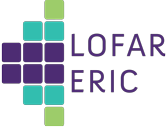Speaker
Description
In this talk, I will present the work we have been carried out over the past month with the data from the NenuFAR Long-Term 10 program. This program has been aimed at observing radio recombination lines between 10 and 85 MHz in absorption in various Galactic lines of sight with the newly commissionned NenuFAR telescope in Nancay. In this talk, I will present the first lines of sight for which we have reduced the data into a scientifically exploitable format: Cassiopeia A, Cygnus A, and Taurus A. For these sources, we used the beamforming mode, and we integrated several tens of hours on each source. The nominal spectral resolution was 95.4~Hz. We built and applied a reduction pipeline, mostly to remove RFI contamination and correct the baselines. We also performed a rudimentary fitting of the spectral lines observed in absorption, associated to line-of-sight clouds. Cas A is the brightest background source and represents an appropriate laboratory to benchmark this new telescope. On this source, we detected 398 lines, with improved signal-to-noise ratio (SNR) and spectral resolution compared to the most recent detections by LOFAR. Cyg A is also a bright source, however, we stacked lines by groups of a few tens of lines to improve the quality of our fitting process. Again, we reached much better SNR and spectral resolution than the most recent detections by LOFAR. Finally, we also detected CRRLs towards Tau A for the first time. The variation of spectral linewidths with the electronic quantum number provides constraints on the physical properties of the clouds: Te, ne, as well as the temperature of the radiation field T0, the mean turbulent velocity and the typical size of the cloud. Globally, our final constraints slightly differ from those inferred from LOFAR results, which could be related to the large beamsize of NenuFAR.

